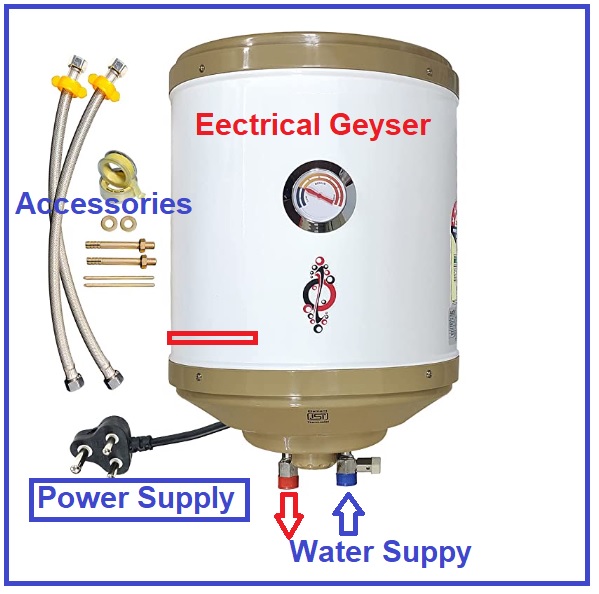Compare geyser sizes before buying a new unit.
Compare geyser sizes before buying a new unit.
Blog Article
Exactly how to Choose the Right Geyser to Make Best Use Of Power Effectiveness in Your Home
Selecting an energy-efficient geyser is not as uncomplicated as it seems, calling for cautious assessment of numerous elements. From understanding the various sorts of geysers, to examining their energy effectiveness ratings and taking into consideration positioning method, each choice plays a vital role in making best use of performance. Stabilizing the first investment with long-term financial savings is also crucial. Allow's start this trip to uncover how to make one of the most informed option for a hot spring that will lower your energy expenses while making certain optimum performance.

Understanding the Various Types of Geyser
While there are numerous types of hot springs available on the marketplace, understanding the distinctions in between them is important for power effectiveness (geyser sizes). The initial type, storage space hot springs, are the most typical and shop warm water in a storage tank for use when needed. They are offered in various capacities and are normally energy-efficient, but they can lose heat when not being used
The 2nd kind is the tankless geyser, which warms water on demand, causing much less power waste but requiring a higher preliminary power draw. There are warmth pump hot springs that use electrical energy to relocate warmth from one area to an additional instead of generating heat directly. They can be a couple of times a lot more power reliable than conventional storage space hot springs. Solar hot springs use solar energy to warm the water, making them the most energy-efficient yet additionally the most expensive.
Evaluating Your Home's Hot Water Requirements
Before diving right into the acquisition of a geyser, it is pivotal to analyze the warm water requirements of your house. This analysis should think about numerous factors consisting of the variety of house members, frequency of warm water use, and the number of warm water electrical outlets in the home (geyser sizes). A little family with infrequent warm water usage could require a smaller sized, less effective geyser contrasted to a larger family members with several day-to-day warm water needs
The kind of pop over to this web-site appliances that call for hot water additionally play a substantial role. Dish washers and washing equipments, as an example, might need more warm water than a basic shower or kitchen sink. Additionally, particular tasks such as bathing or cleaning also influence the regularity and volume of warm water required.
Evaluating Energy Performance Ratings of Geyser
Having actually analyzed the warm water demands of your family, it is essential to turn your interest to the energy effectiveness scores of hot springs. These rankings, usually given as Power Variable (EF), show a geyser's general power efficiency based upon the amount of warm water produced each of gas eaten over a normal day. The greater the EF, the more effective the water heating system.

Considerations in Geyser Size and Positioning
Beyond power performance ratings, the dimension and placement of your geyser are essential aspects to think about. The dimension of the geyser ought to straighten with your home's warm water requirements. A small geyser might make use of much less power but might not give adequate warm water for several usages at the very same time, whereas a bigger unit can meet greater need however Get More Information may eat even more power.
Placement likewise affects power performance. Hot springs should be installed near factors of usage to minimize heat loss during water transportation. A centrally located geyser can service numerous areas effectively. Furthermore, considering thermal insulation, a geyser situated in a warmer area loses much less warmth and consequently makes use of much less energy to keep the water temperature level.
Price Evaluation: Stabilizing First Financial Investment and Long-Term Financial Savings
While size and placement unquestionably play considerable functions in a hot spring's energy performance, one should not overlook the monetary aspect. When taking into consideration the first investment, the geyser sizes cost of energy-efficient geysers can be higher than standard designs. The boosted ahead of time cost can be offset by lasting power savings, making it a beneficial financial investment in the lengthy run (geyser sizes).
Analyzing long-lasting cost savings calls for an understanding of the geyser's energy score. A device with a greater rating will consume less energy, equating to lower utility expenses gradually. Government incentives and rebates for energy-efficient appliances can also help recoup initial expenses.
Ultimately, upkeep and life-span need to be factored in. Energy-efficient hot springs usually have much longer life-spans and reduced upkeep prices, adding to general cost savings. When stabilizing first investment and long-term financial savings, one must consider not only the purchase rate yet likewise energy intake, federal government motivations, and upkeep costs.

Conclusion
These include recognizing the kinds of hot springs, assessing your family's warm water requirements, examining power performance scores, and calculating expense benefits. The right geyser dimension, placement, and insulation can significantly lower power bills and ecological impact.
Report this page